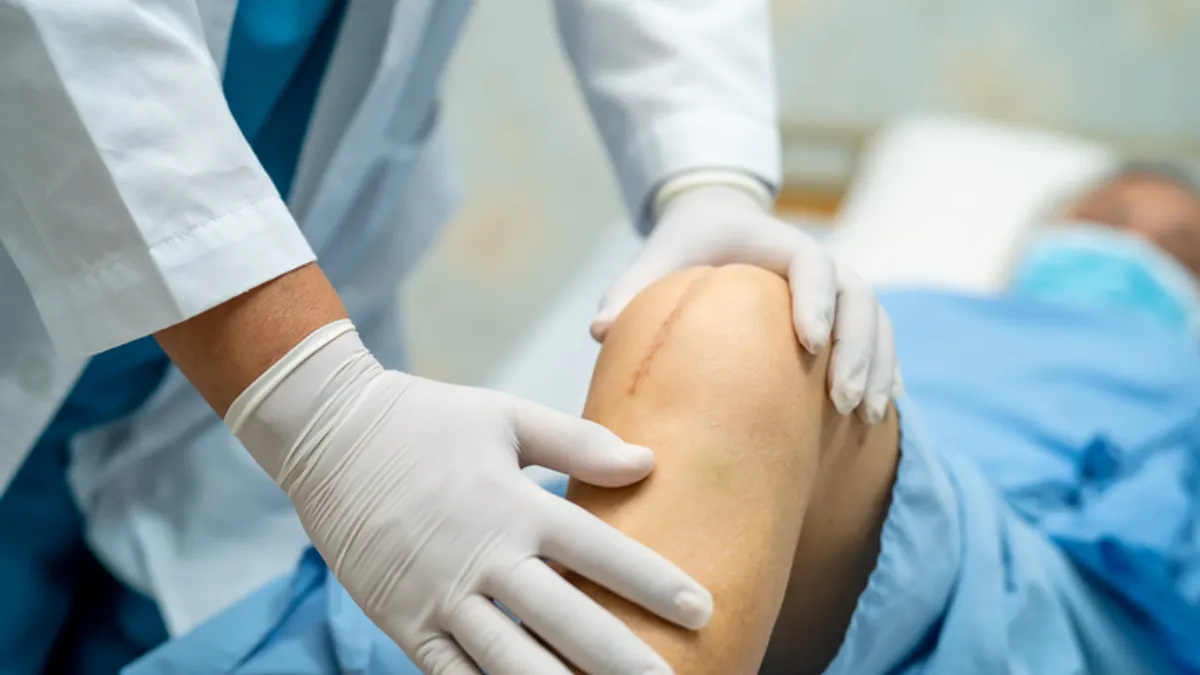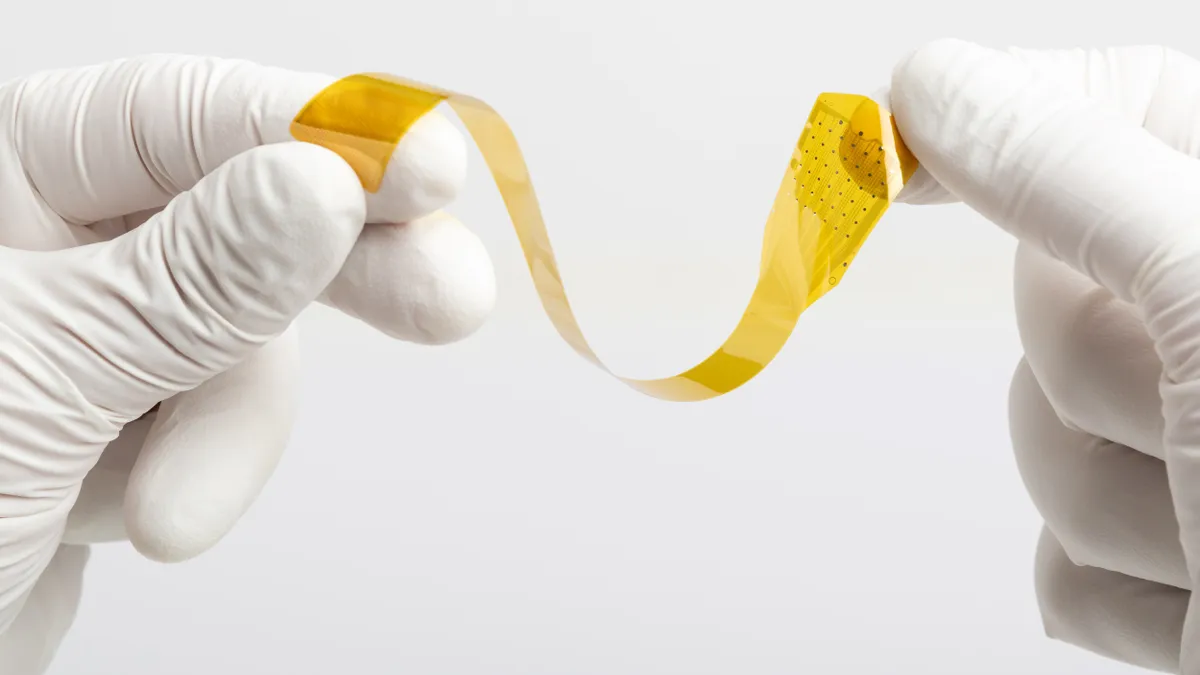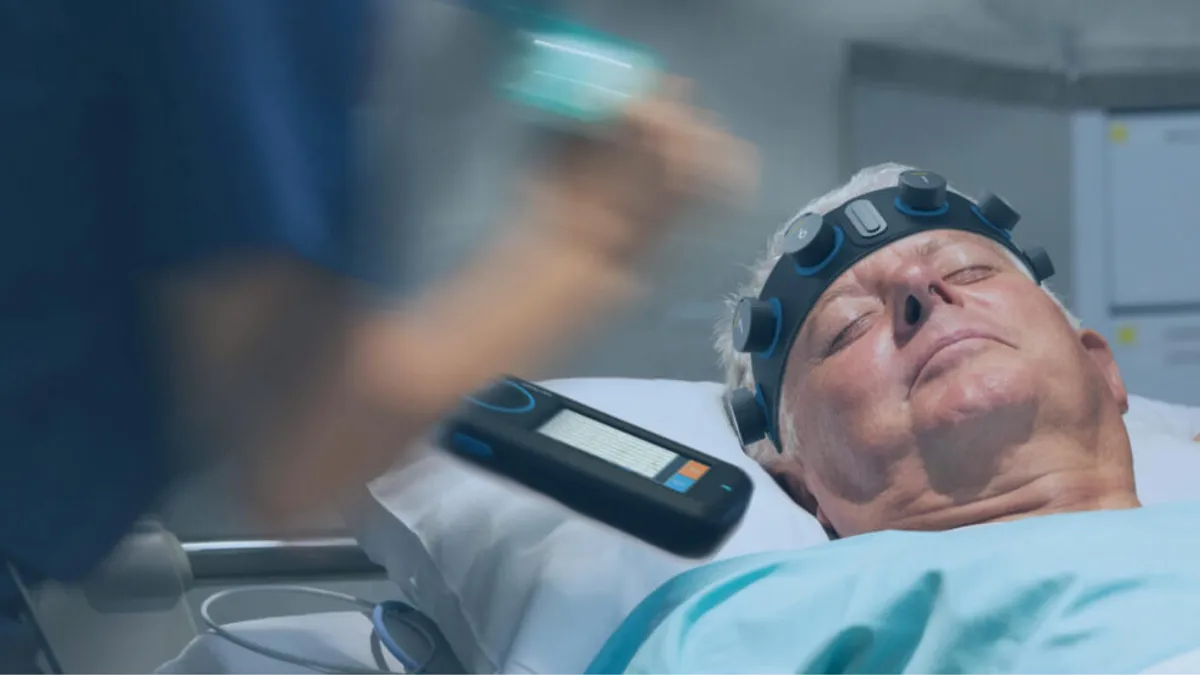Orthopaedics companies posted better-than-estimated results in the first quarter as procedures recovered even amid a surge of COVID-19 cases in January.
Johnson & Johnson, the first company to report revenue results this year, recorded a 3.2% growth in its orthopaedics segment in the U.S. and 4.2% in international markets, boding well for other companies in the sector including Stryker, Zimmer Biomet and Smith & Nephew. All beat consensus estimates for first-quarter sales except for Johnson & Johnson, which posted profit that beat analyst estimates.
Some of those companies posted sales that matched or surpassed pre-pandemic levels. For instance, Stryker’s net sales of $4.3 billion for this quarter exceeded revenue of $3.5 billion at the start of 2019, while Smith & Nephew’s revenue of $1.3 billion in the first quarter of 2022 outpaced sales results in the same period in 2019.
Some orthopaedics companies surpassed 2019 revenues
| Q1 2022 revenue | Q1 2019 revenue | |
|---|---|---|
| Johnson & Johnson | $2.2B | $2.2B |
| Stryker | $4.3B | $3.5B |
| Smith & Nephew | $1.3B | $1.2B |
| Zimmer Biomet | $1.7B | $2B |
SOURCE: Companies' earnings reports
Zimmer CEO Bryan Hanson said January was “pretty tough,” but by March the company recorded growth over 2019. That trend continued into April.
“So all positive from that perspective, but we do expect that staffing pressure will continue to be a challenge throughout the year,” Hanson added. “Just not as intense, I think, as what we thought when we started the year.”
Stryker CEO Kevin Lobo also mentioned the staffing pressure when discussing plans for the company’s almost $3 billion acquisition of Vocera Communications, which closed on March 1. So far, the company is still in the early stages of integrating the company, but Lobo said that the timing was perfect, noting that hospitals are looking for solutions to improve workflow and reduce errors with the ongoing workforce shortages.
Companies also fielded questions about how they’re dealing with patient backlogs as orthopaedic procedures were considered “elective” when hospital capacity ran low.
Preston Wells, Stryker’s vice president of investor relations, said a backlog has built up over the past two years, but with the increase in procedures in the first quarter, it’s not clear what portion of that was from the backlog or new patients.
“There has to be some piece of that backlog that has been worked down,” Wells said. “But really, for the full backlog to be worked through, it's going to take a sustained recovery.”
Smith & Nephew's CFO, Anne-Francoise Nesmes, made similar comments, noting hospitals' use of travel nurses to offset labor shortages.
"That remains a constraint on hospitals in the U.S., because once you’re fully staffed, you need time for the team to get together and work at speed and at quality as well," Nesmes said. "So that remains a feature of the industry and something that hospitals need to work through."
Knees procedures registered the most growth
Across the industry, knee procedures had the most growth in the first quarter. Stryker posted double-digit growth in knee implants, while Zimmer and Smith & Nephew recorded an increase in the high single digits.
Stryker attributed the increase to improvements in procedures volumes as well as growth of its installed base of its Mako robotic arms, which assist with joint replacement surgery. However, installations of its Mako robots slowed in the quarter, curbing the company's other orthopaedic revenue by 20%.
CEO Lobo attributed the decrease to shortages of electronic components and delayed construction projects, exacerbated by hospital staffing shortages. Still, demand for Stryker’s Mako surgical robots increased in the period.
Stryker's orthopaedic revenue by segment
| Q1 revenue | Year-over-year increase (decrease) | |
|---|---|---|
| Orthopaedics and Spine total | $1.9B | 5.1% |
| Knees | $464M | 12.5% |
| Hips | $327M | 5.9% |
| Trauma and Extremities | $685M | 7.1% |
| Spine | $279M | 0.1% |
| Other | $97M | (20.4%) |
SOURCE: Stryker's earnings report
Zimmer said revenue from its knee implants increased by 8% in the quarter. Executives noted that the company's Persona IQ “smart” knee implant recieved a “very positive” reception, though it’s only in a limited launch.
Zimmer also plans to move into cementless and shoulder applications in the future, BTIG analysts wrote in a research note.
“You know, the funny thing is when you think about knee, most people think about it, and rightly so, as a pretty slow growth market. But in reality, there's more innovation entering the knee space than we've ever seen before,” CEO Hanson said, referring to competitors that are launching their own products focused on data, robotics and other technologies.
Zimmer also touted growth in its installed base for its Rosa surgical robots, now at more than 600 devices. In early March, the company finished a spinoff of its spine and dental business.
Smith & Nephew said its knee implants increased by 9% year over year, while sports medicine joint repairs climbed 11%. The company attributed both to a recovery in elective procedures and the latter to more knee repair procedures, “which had been particularly impacted by lower sport participation due to COVID,” the company stated in its first-quarter earnings report.
Ronald Diggelmann, who had served as the company’s CEO since 2019, announced plans to step down earlier this year, with new CEO Deepak Nath joining the company on April 1.
Globus Medical also announced a recent CEO change. On April 22, the company said Dave Demski would step down “effective immediately,” taking investors by surprise. Daniel Scavilla, Globus’ former CFO and chief commercial officer, will be assuming the CEO position. The company announced preliminary revenue data and said it expects sales of $230.5 million in the first quarter, a 1.4% increase from last year. It will report results on May 10.


















